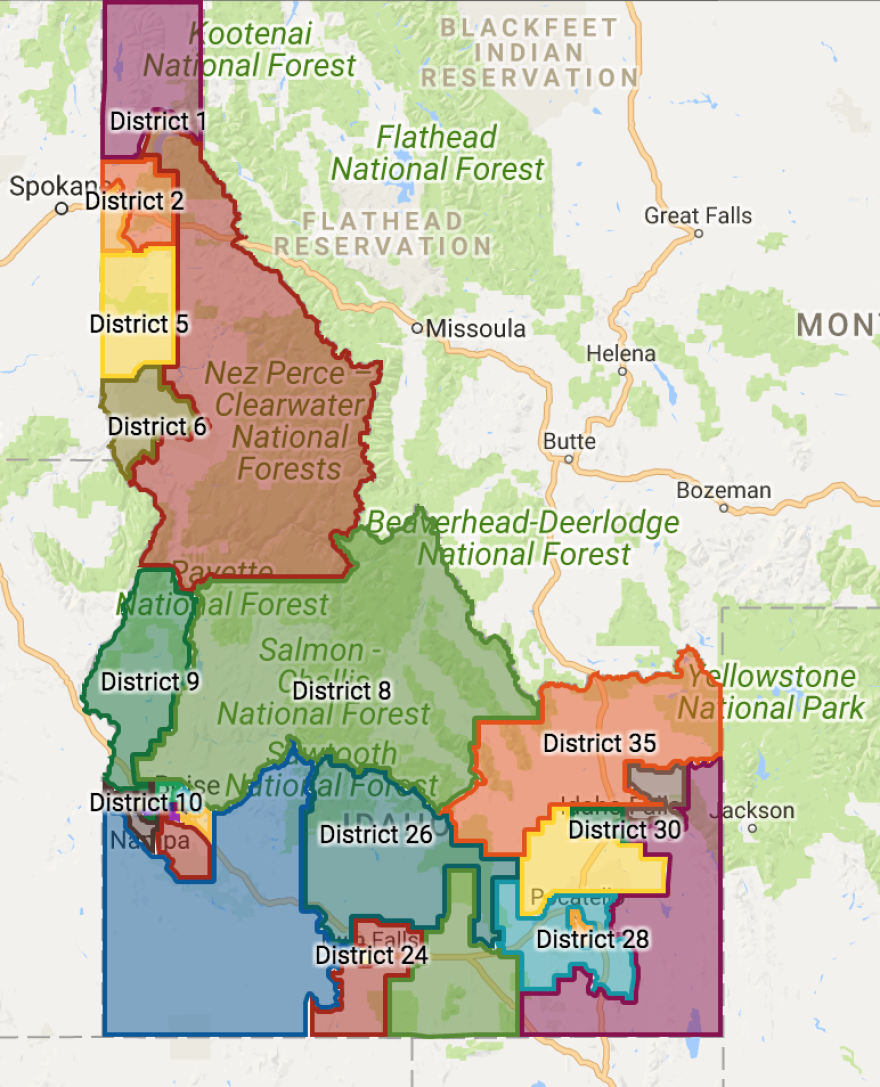It’s a brisk afternoon in January as canvassers hit Boise’s North End. Their goal? Roughly 56,000 signatures to expand access to Medicaid in Idaho.
It’s a popular proposal in this liberal neighborhood, but the Republican-dominated legislature has pushed back against the idea for years.
Medicaid for Idaho volunteer Joe Goode isn’t running into much resistance.
“God, people in the North End are just so nice. It makes it so easy. You just feel like ‘Here, Medicaid bill.’ They’re like, ‘Oh, okay,’” Goode says.
After half an hour, Goode has gotten several signatures.
There’s just one problem. A lot of people who’ve signed Joe’s petition have put the wrong date, meaning they’re invalid.
These kinds of setbacks wouldn’t have been as big of a deal if rules surrounding the ballot initiative process hadn’t changed about five years ago.
Under the new rules, getting those 56,000 people is harder than it once was. Now, it’s not just about numbers – it’s about geography.

If you’re collecting signatures for an initiative, you have to go to at least 18 of Idaho’s 35 legislative districts and get a set number of people to sign on based on how many votes were cast in the last general election.
This is just the latest complication.
From the late ‘90s to the early 2000s, signature gathering used to revolve around counties. But that didn’t last long because judges found it gave more clout to rural voters.
Then, the pendulum swung back in the other direction, again handing urban centers the power, according to John Thompson.
“The problem we had was that these signature gatherers could stand there without ever leaving Costco in Boise and get every signature they needed to make it a ballot initiative and that doesn’t represent people in rural areas,” Thompson says.
The Idaho Farm Bureau, the organization Thompson’s with, pushed for the 2013 overhaul amid fears out-of-state animal rights groups would force through tighter regulations on agriculture.
“There was people concerned that it’s going to make the process more difficult and more hard. Well, yeah, lawmaking is supposed to be a deliberate, difficult process that includes everyone,” he says.
However, Medicaid for Idaho co-founder Luke Mayville, a Sandpoint native, says while he wouldn’t necessarily choose to gather so many signatures across the entire state, he thinks it gives the cause a broader backing.
“There’s something very challenging about that, but there’s also something really energizing about that,” Mayville says.

Still, the reality is his team has to wind through mountain passes, travel through hundreds of miles of farmland and convince enough voters of their cause in one of the most conservative states in America to name just a few challenges.
Mayville thinks it’s still possible to meet these new ballot requirements, but you need two things.
“You have to have a lot of money, and I’m not just talking thousands of dollars – we’re talking millions of dollars, which we didn’t start with at all. Nowhere close. You either have to have that or you have to have an urgent cause,” he says.
Ballot initiatives haven’t ever been a slam-dunk in Idaho. Voters have only approved 14 of them since 1938. Just five have made it on the ballot in the past 20 years, with no initiative appearing since the new changes took effect in 2013.
Jeff Lyons, a political science professor at Boise State University, says these new rules can be problematic for some.
“It’s conceivable that if you don’t have those kinds of requirements you can have something that truly is citizen-led, small budget kind of a thing that if it resonates with a group of people you’re in better shape,” Lyons says. “This makes it a lot harder to do that.”

A recent check in with Mayville found the Medicaid for Idaho team has collected 25,000 signatures so far.
But the clock is ticking. They’ve only got about two months left to reach the roughly 56,000 signatures they’ll need to put their question to voters in November.
Follow James Dawson on Twitter @RadioDawson for more local news.
Copyright 2018 Boise State Public Radio





